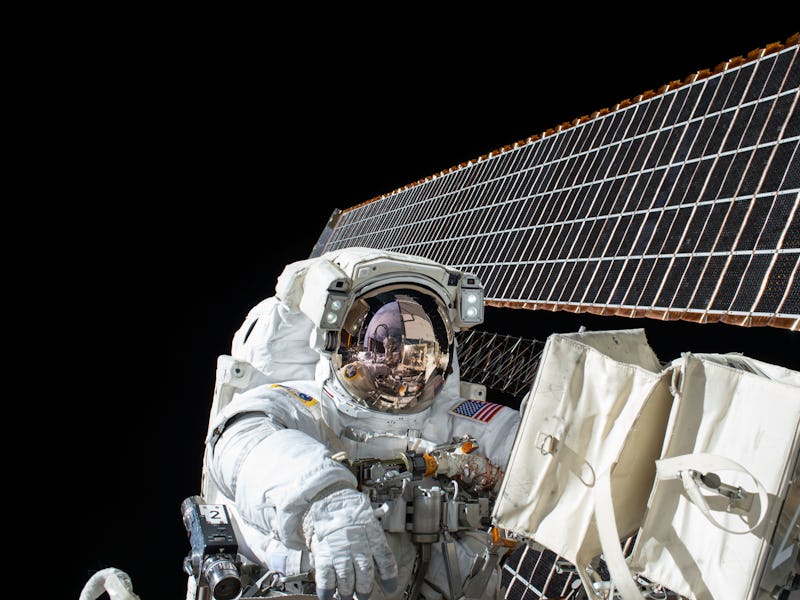The International Space Station serves as a living monument to international scientific cooperation. It’s far more than just a symbol, though. It’s an active lab, hosting experiments on edible space crops, antibiotic-resistant bacteria, and lightning detection, just to name a few. For all of the countries involved in the ISS, there is no other place to conduct this kind of research.
And it’s totally unclear how any of this science could occur if the ISS is shuttered.
In a House Committee on Space, Science, and Technology hearing on Wednesday, titled “The ISS after 2024: Options and Impacts”, lawmakers and experts discussed whether the U.S. should decrease funding for NASA’s role in the ISS so the space agency can focus more of its resources on crewed missions to Mars and the moon. The nation is currently under agreement to help fund and operate the station through 2024, but there’s nothing stipulated beyond that year.
“Tax dollars spent on the ISS will not be spent on destinations beyond low Earth orbit, including the moon and Mars. What opportunities will we miss if we maintain this status quo?” says U.S. Rep. Brian Babin, a Texas Republican and chair of the House Science and Technology’s Subcommittee on Space. “The longer we operate the ISS, the longer it will take to get to Mars.”
If the U.S. chose to withdraw from the station, it could put a ton of research in jeopardy. Besides the aforementioned experiments, the ISS is the only site that can be used to help us figure out how humans might survive prolonged space trips like those that would bring us to Mars. While this kind of research helps enhance our understanding of the limitations and possibilities of crewed space flights, research and space flight may be at direct odds with each other due to funding limitations.
As it stands, NASA’s role in the ISS costs U.S. taxpayers $3-4 billion per year. Babin points out that this is about half of NASA’s human spaceflight budget. The human spaceflight budget makes up almost half of NASA’s total annual budget. For fiscal year 2016, these totals were $8.51 billion and $18.5 billion, respectively.
Babin emphasizes that the NASA Transition Authorization Act of 2017, which President Donald Trump signed on Tuesday, requires NASA to develop a plan for the U.S.’s role on the ISS after 2024. This hearing represents the first stage of that process.
Rep. Dana Rohrabacher, a California Republican, called into question whether the $67 billion the U.S. has spent on the ISS so far is worth the scientific discoveries that have come out of it.
“I’m not sure if the scientific research that has been done on the International Space Station has justified the expense of the $67 billion that we’re talking about,” says Rohrabacher. He suggests that when the ISS budget was first approved, there were promises made regarding cancer cures, which he has not seen come to fruition.
Rohrbacher does, however, indicate that America’s role in the ISS has been an important part of fostering peaceful cooperation between the U.S. and Russia, and that decreasing that role would be ill-advised at this moment, given the current relationship between the two countries.
While this is a nice thought, there are some more pressing scientific considerations at play. Decreasing U.S. funding to the ISS could negatively impact the very thing those funds would be going to: space travel. If Congress decides to cut the budget for the ISS in favor of crewed space missions, the unintended consequence could be that the U.S. would be seriously limiting its participation in the only place humans can actually test the effects of spaceflight on human bodies.
